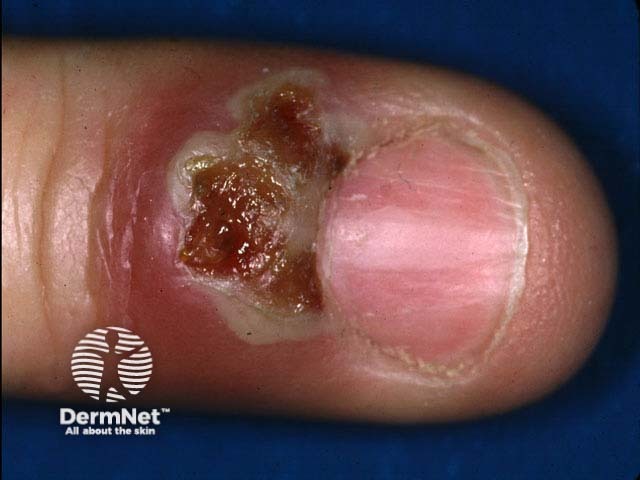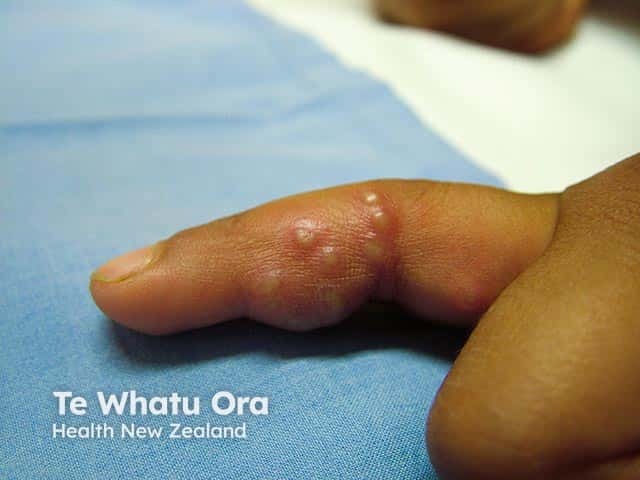Main menu
Common skin conditions

NEWS
Join DermNet PRO
Read more
Quick links
Author(s): Dr Vidette Wong, Belfast, Northern Ireland, United Kingdom (2023)
Reviewing dermatologist: Dr Ian Coulson
Edited by the DermNet content department
Introduction Demographics Causes Clinical features Complications Diagnosis Differential diagnoses Treatment Prevention Outcome
Herpetic whitlow is a painful viral cutaneous infection that usually affects the distal fingers or thumbs, and occasionally the toes. It is caused by herpes simplex virus (HSV) type 1 or 2, and can be vesicular or pustular in nature.

Clustered vesicles, due to HSV, have broken down into erosions on the proximal nail fold

Several nail folds are affected by herpetic whitlow in a woman receiving chemotherapy

Clustered clear vesicles on the proximal nail fold typical of an early phase of a herpetic whitlow

A herpetic whitlow on the thumb five days after onset

Clustered clear vesicles and oedema in an early herpetic whitlow in skin of colour (HW-patient1)

Early clustered vesicles in a herpetic whitlow
One case series reported the incidence of herpetic whitlow as 2.4 cases per 100,000 people per year. Males and females appear to be equally affected.
In young children, herpetic whitlow commonly occurs following oral herpes infection. This is thought to be related to thumb sucking causing autoinoculation from active herpetic lesions in the mouth.
Herpetic whitlow in adults is more commonly associated with exposure to genital herpes, or occupational exposure of dental and other health care workers to patients with herpes simplex including oral secretions.
People who are immunosuppressed are also more susceptible to herpetic infections.
View images of herpetic whitlow
Herpetic whitlow can be diagnosed clinically based on history and appearance of the lesions.
Viral cultures or a Tzanck smear can be used to confirm the diagnosis. Ballooning multinucleated giant cells and eosinophilic inclusion bodies are seen on the Tzanck smear. A bacterial swab can also be taken if secondary or concurrent bacterial infection is suspected.
Herpetic whitlow is self-limiting and usually resolves without any complications in 2–4 weeks. Recurrence is possible due to reactivation of the virus, which can be triggered by stress, other illness, or trauma to the skin or nails. Recurrent episodes are usually less severe than the primary infection.